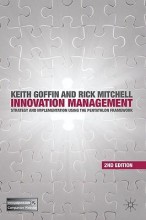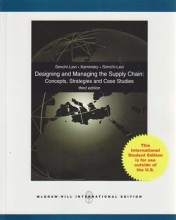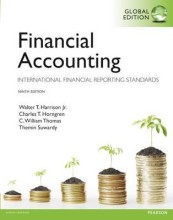Summary: Financial Accounting : International Financial Reporting Standards. | 9789810684570 | Walter T Harrison, et al
- This + 400k other summaries
- A unique study and practice tool
- Never study anything twice again
- Get the grades you hope for
- 100% sure, 100% understanding
Read the summary and the most important questions on Financial accounting : international financial reporting standards. | 9789810684570 | Walter T. Harrison ; Charles T. Horngren
-
1 Conceptual Framework and Financial Statements
This is a preview. There are 16 more flashcards available for chapter 1
Show more cards here -
What does a income statement represent?
1. Revenues
- Net sales
- Other income revenues
2. Expenses
- Cost of goods sold
- Selling, general and administrative expenses
- Depreciation, amortization and provisions.
- Non-recurring income and expenses
- Finance costs, or interest expenses (the cost of borrowing money)
- Income tax expense.
-
What does the statement of financial position represent?
1. Assets
- Cash and cash equivalents
- Trade receivables
- Inventories
- Other current assets
- Total current assets
- Property, plant and equipment
- Intangible assets
- Other non-current assets
- Total non-current assets
- Total assets
2. Liabilities
- Trade payable
- Tax payable
- Borrowings - short-term
- Other current liabilities
- Total current liabilities
- Borrowing - long-term
- Other non-current liabilities
- Total non-current liabilities
- Total liabilities
3. Shareholder's equity
- Capital
- Retained earning, reserves and others
- Total shareholder's equity
- Total liabilities and shareholder's equity.
-
Which questions should you ask in an ethical analysis?
- Which options are most honest, open, and truthful?
- Which options are most kind, compassionate, and build a sense of community?
- Which options create the greatest good for the greatest number of stakeholders?
- Which options result in treating others as I would want to be treated?
-
5 Short Term Investements & Receivables
This is a preview. There are 10 more flashcards available for chapter 5
Show more cards here -
What are trading securities?
Trading securities are share investments that are expected to be sold in the near future with the intent of generating profits on the sale.
-
What is a note receivable?
A written promise to pay the lender a definite sum at the maturity date, plus interest.
-
The Aging-of-receivables method is ...
a way to estimate bad debts by analyzing individual accounts receivable according to the length of time they have been receivable from the customer.
-
How to write of uncollectible accounts?
1. Debit accounts receivable
2. Credit Allowance for doubtful receivables.
-
How to recover previously written-off receivables?
1. Reverse write of entry OR
2. Decrease bad debt expense
-
What is the direct write-off method?
A method of accounting for bad debts in which the company waits until a customer's account receivable proves uncollectible and then debits uncollectible-account expense and credits the customers accounts receivable.
-
The Acid-test ratio is calculated by ...
(Cash + short-term investments + net current receivables) / Total current liabilities = acid-test ratio.
The higher the acid-test ratio, the easier it is to pay current liabilities.
- Higher grades + faster learning
- Never study anything twice
- 100% sure, 100% understanding

































